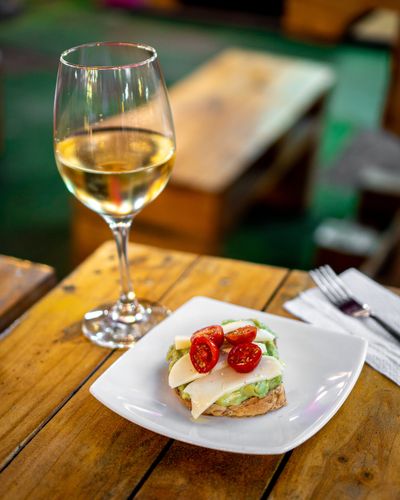Water Cooler: A beginner’s guide to wine and food pairings

You’ve probably heard that white wine goes with fish and chicken, and red wine goes with steak, but it doesn’t stop there.
There is a deep world of information when it comes to wine pairing, so here’s a quick guide to the science behind why certain wines pair well with specific flavors and dishes.
For beginners, it’s best to start with a few general guidelines of pairing food and wine.
Wine should be more acidic than the food, or at least have an equal level of acidity. In wine tasting, acidity refers to the tart, sour and fresh attributes of the wine. Acidity is perceived in the mouth by the salivary glands. Because acidity causes the mouth to water, it can stimulate the appetite. An acidic wine can smooth out an acidic dish, allowing its other flavors to come forward, whereas drinking a wine that is less acidic than the dish will make it seem weak in flavor.
Pair sweet foods with a wine that is even sweeter. You’ve likely heard of the phase “dessert wine.” These sweet wines usually have a high sugar content, often determined by the amount of residual sugar remaining after fermentation. If you eat a dessert that is sweeter than the wine you drink, the wine will taste too tart and weak, and it may make the dessert taste off as well.
Match the weight and texture of foods with the weight and body of wines. For example, heavy foods like rich pastas, pizzas, red meats and earthy vegetables should be paired with a wine that is just as heavy in body and flavor, such as chianti, syrah or cabernet sauvignon. Light foods, like salads, poultry or seafood should be paired with light and delicate wines like sauvignon blanc, pinot gris or pinot blanc.
Bitter wines are balanced best with fats. Bitterness in wine typically comes from the tannins of a wine. Tannins provide structure to the wine, often adding a gritty texture with an astringent taste that causes the mouth to pucker, similar to a bitter tea. Light foods like a vegetable-based dish, or spicy foods, usually accentuate bitterness too much. High fat foods will balance it, or you can try to complement the bitterness with a bitter food, such as grilled foods with char.
If a dish is sauce-based, match the wine with the sauce. This is because the sauce tends to dictate flavor profiles more than other elements of the dish. Acid tomato-based sauces pair best with an acidic wine. Cheese-based sauces can be paired with a variety of wines, but light-bodied reds and whites will compliment the richness. If the dish doesn’t have a sauce, pair with the main meat or vegetable.
Following general pairing rules like this helps simplify the complexity of flavor pairings, but learning a bit about the science helps you understand where these rules come from and how to tactfully experiment with them.
Pairings can be made of congruent flavors, such as rich beef with earthy mushroom, or contrasting yet complementary flavors such as acidic lime with rich coconut. There are six basic tastes used in pairing food and wine – fat, spice (piquant), salt, acid, sweet and bitter.
Keep it simple by focusing on the two primary flavor components in foods. For example, macaroni and cheese is primarily fat and salt. A green salad is usually bitter and acidic. Something like creamed corn offers fat and sweetness.
After the basic flavors are identified, you can experiment with pairing options that are either contrasting or congruent. For example, an acidic and light white wine will complement the fat of macaroni and cheese, whereas a rich white wine like chardonnay will add to the creaminess as a congruent pairing.
Rachel Baker can be reached at (509) 459-5583 or rachelb@spokesman.com.